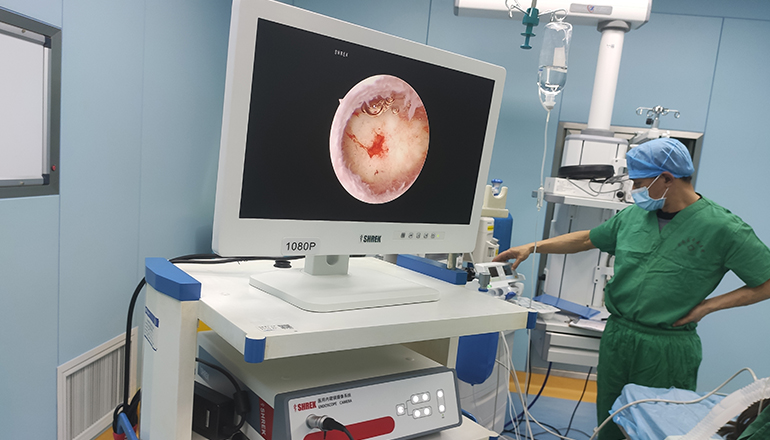- Shanghai, China
- [email protected]
- +86-21-58189111
Hysteroscopic endometrial polypectomy is a medical procedure that is performed to remove endometrial polyps from the uterus. Endometrial polyps are non-cancerous growths that develop in the lining of the uterus and can cause symptoms such as irregular bleeding, heavy menstrual bleeding, and infertility.
Hysteroscopic endometrial polypectomy is typically performed on an outpatient basis and is done under local or general anesthesia. During the procedure, a hysteroscope is inserted into the uterus through the cervix. The hysteroscope is a thin, flexible tube with a light and camera on the end that allows the doctor to see inside the uterus.
Once the hysteroscope is in place, small instruments are used to remove the polyp from the uterine wall. The procedure is usually done using a technique called resectoscopy, which involves using an electrical loop to remove the polyp. This technique is minimally invasive and allows the doctor to remove the polyp without damaging the healthy tissue in the uterus.
After the procedure, the patient may experience some cramping and mild bleeding for a few days. The doctor may recommend avoiding sexual intercourse for a few weeks to allow the uterus to heal properly.
Hysteroscopic endometrial polypectomy is a safe and effective procedure that can help women who are experiencing symptoms related to endometrial polyps. These symptoms can include irregular bleeding, heavy menstrual bleeding, and infertility. The procedure can also help prevent complications such as anemia and pelvic pain.
However, like any medical procedure, there are risks associated with hysteroscopic endometrial polypectomy. These risks include bleeding, infection, damage to the uterus, and perforation of the uterus or other organs. It is important for patients to discuss the risks and benefits of the procedure with their doctor and to make an informed decision about whether it is right for them.

In conclusion, hysteroscopic endometrial polypectomy is a safe and effective procedure that can help women who are experiencing symptoms related to endometrial polyps. It is a minimally invasive procedure that is usually done on an outpatient basis and can help prevent complications such as anemia and pelvic pain. While there are risks associated with the procedure, it is generally considered a low-risk option that can provide significant relief to patients. If you are experiencing symptoms related to endometrial polyps, talk to your doctor to discuss your treatment options and to determine whether hysteroscopic endometrial polypectomy may be right for you.
It is important to follow all pre-operative instructions provided by your doctor if hysteroscopic endometrial polypectomy is recommended. This may include avoiding food and drink for a certain amount of time prior to the procedure, stopping certain medications, or taking antibiotics to prevent infection.
After the procedure, it is important to follow all post-operative instructions provided by your doctor. This may include taking pain medication or antibiotics as prescribed, avoiding certain activities, and keeping the area clean to prevent infection.
It is also important to schedule a follow-up appointment with your doctor to ensure that the procedure was successful and to monitor your recovery. If you experience any unusual symptoms or complications after the procedure, such as heavy bleeding or fever, contact your doctor immediately.
In summary, hysteroscopic endometrial polypectomy is a safe and effective procedure that can help women with endometrial polyps to manage their symptoms and prevent complications. It is a minimally invasive procedure that is usually done on an outpatient basis and has a low risk of complications. It is important to discuss the risks and benefits of the procedure with your doctor and to follow all pre-operative and post-operative instructions to ensure a successful recovery.
If you are experiencing symptoms related to endometrial polyps, such as irregular bleeding or heavy menstrual bleeding, speak with your doctor to discuss your treatment options. Hysteroscopic endometrial polypectomy may be a good option for you if you are looking for a minimally invasive procedure that can provide significant relief from your symptoms. Your doctor can help you decide whether this procedure is right for you and guide you through the process.
Leave a Comments